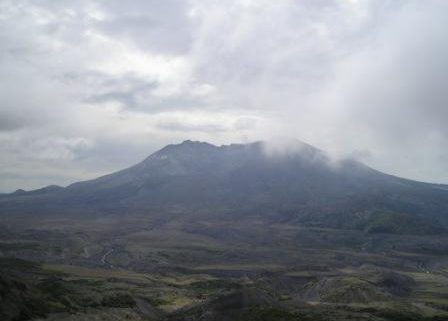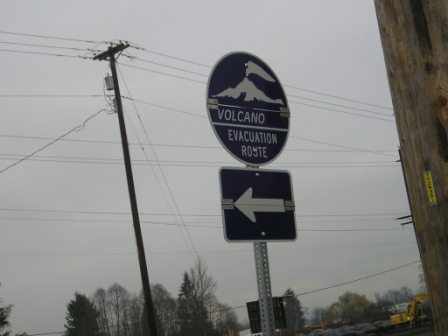Mt. St. Helens: 34 Years Later
In 2004, we stood five miles away from the volcano known as Mt. St. Helens. Missing from the mountain was nearly 1,300 feet of its top. In its place was a huge gaping maw. A plume of steam spewed upward from the center of the massive hole, where a three-hundred foot tall dome of lava was slowly but steadily growing upward.
Standing there, my wife and I couldn’t help noticing the silence. There were no birds chirping, no tree branches creaking and clacking together in the breeze. Nothing. Not a single sound. It was extremely eerie. Yet it was extremely calming at the same time. There was a definite feel of overwhelming peace and tranquility. How odd in a place where such devastation had occurred.
The threat of danger to human life on the day we were there prompted officials to enact the five-mile “keep away” boundary. Still, the volcano was an awesome site, and the distance between us did nothing to diminish the power that I knew was churning and roiling below the surface. I also knew the history of St. Helens. She was a killer.
Twenty-four years prior to my trip to the area, on May 18, 1980, Mt. St. Helens erupted with such force that it blew off the top of the mountain, leaving the crater you see in the photos. As a result of the eruption, the mountain’s snow pack melted and caused flooding, and hot ash started forest fires.
Fast moving gases and rock were propelled down the mountain in what was the largest debris avalanche in recorded history. It flattened everything in its path, including all trees, vegetation, and houses and other buildings within 230 square miles. 57 people were killed. Had there been more in the area, they, too, would have perished. No living thing in the direct path of destruction survived. Nothing and no one
I wish I’d taken a better photo, one that showed all the dead trees on the ground. As far as the eye could see, they looked like thousands upon thousands of matchsticks, all pointing in a single direction, facing away from the volcano and the force of the blast.
Nearby hills where tall evergreens and other trees once stood.
The bridge to Mt. St. Helens
Today, plants, trees, and wildlife have returned, and the area is definitely well on its way back to normal…until the next time when the mountain can no longer contain the pressure from within.
Below – Steam rising from the growing lava dome. The mountain is attempting to rebuild itself.
Below – An ominous message of the past, and of things that could come again, and probably will.





